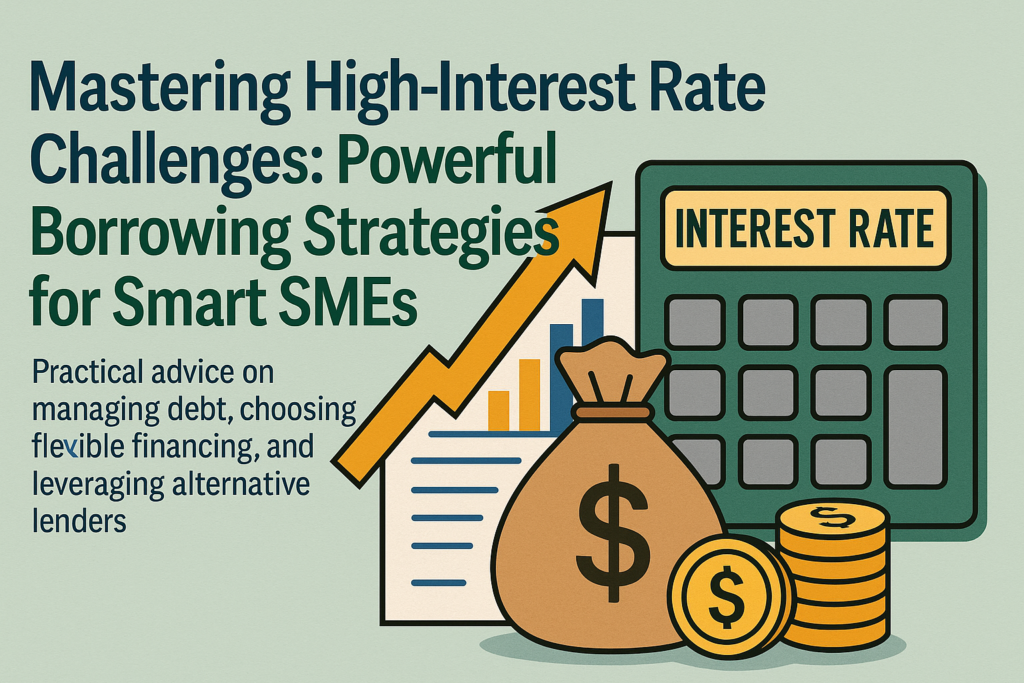
Table of Contents
In today’s unpredictable economy, smart borrowing strategies are no longer optional—they’re essential. For SMEs operating in a high-interest rate environment, borrowing wisely can mean the difference between thriving and barely surviving. Whether you’re refinancing, seeking new capital, or managing existing debt, aligning your financial moves with economic trends is key.
When interest rates rise, borrowing becomes more expensive, directly impacting your cash flow, loan repayments, and long-term growth strategies. So how do you, as an SME, stay ahead?
Let’s explore practical, actionable strategies to help you survive and succeed in high-interest market conditions.
1. Prioritize Debt Management and Cash Flow Planning
The first rule of smart borrowing is knowing what you owe. Conduct a comprehensive audit of all outstanding debts. Organize loans by interest rate, repayment terms, and remaining tenure. Focus on repaying high-interest debt first and avoid taking on new debt unless absolutely necessary.
- Renegotiate interest terms with lenders.
- Shift to loans with fixed rates if you expect rates to continue rising.
- Avoid balloon payments that might strain cash flows.
2. Embrace Flexible Financing Solutions
Flexible financing is a lifeline in a high-interest rate environment. Look beyond traditional loans and explore options like:
- Lines of credit that you draw on only when needed.
- Invoice financing for short-term liquidity.
- Revenue-based financing that scales repayments with your earnings.
These solutions give SMEs greater agility, helping them navigate financial challenges without locking into rigid repayment plans.
3. Leverage Alternative Lenders and FinTech Platforms
Alternative lenders are reshaping SME finance. Unlike traditional banks, these platforms are quicker, less bureaucratic, and often offer innovative lending models. While interest rates may not always be lower, the flexibility and speed they offer are unmatched.
Why consider alternative lending?
- Faster approvals.
- Lenient credit history requirements.
- Tailored repayment structures.
Always ensure the lender is reputable, and compare offers across platforms before committing.
4. Focus on Financial Resilience, Not Just Borrowing
High-interest rate periods demand a shift in mindset—from aggressive expansion to strategic resilience. Use borrowing as a bridge to stability, not as a crutch for unsustainable growth.
- Reassess all non-essential expenses.
- Strengthen recurring revenue streams.
- Invest in automation to reduce long-term costs.
5. Monitor Market Trends and Reevaluate Frequently
Smart borrowing is not a one-time decision. Keep a close eye on economic updates, central bank announcements, and market sentiment. Regularly evaluate how rate hikes or cuts affect your financing position and pivot accordingly.
Conclusion: Be Proactive, Not Reactive
SMEs don’t have to fear a high-interest rate environment. With the right mindset and smart borrowing strategies, you can turn challenges into opportunities. Focus on flexibility, explore non-traditional financing routes, and manage your debt with discipline. This not only helps you survive—it ensures your business continues to grow, thrive, and innovate.
